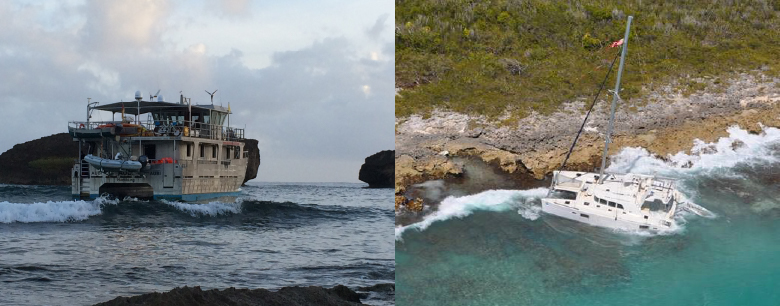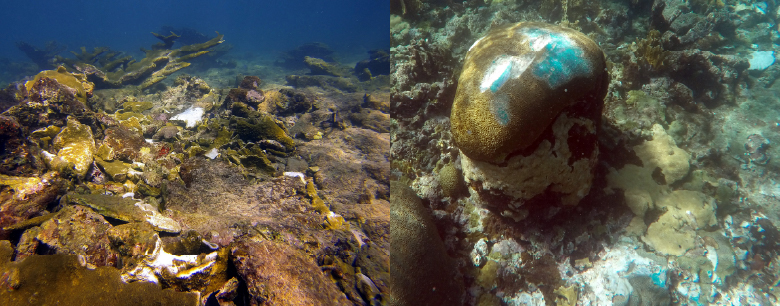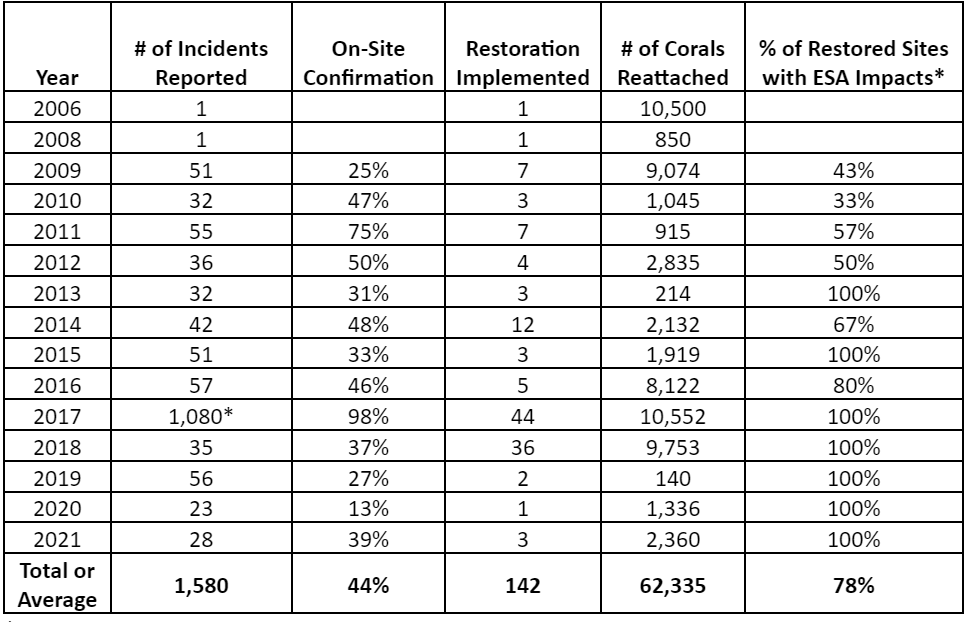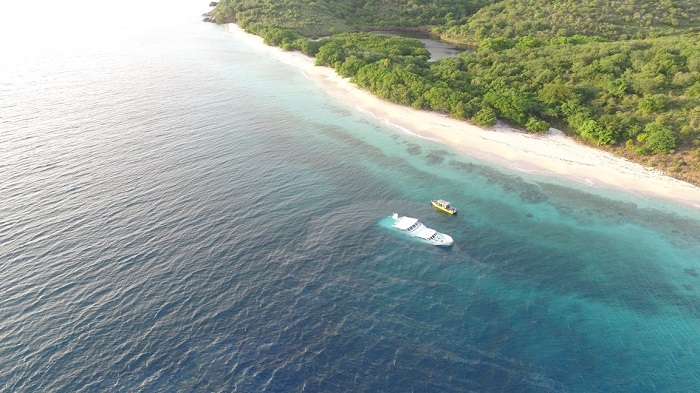- ABOUT US
- PROGRAM AREAS
- CONSERVATION APPROACH
- EDUCATION
- MULTIMEDIA
Restoring corals after physical damage from vessel groundings and natural disasters
By: Sean Griffin, Marine Habitat Resource Specialist, NOAA Restoration Center
Takeaway
Since 2006, the NOAA Restoration Center has performed restoration at 142 sites in Puerto Rico and the U.S. Virgin Islands and reattached over 60,000 corals, many of which are listed as endangered or threatened.

Background
Coral reefs can be damaged by both human activities and natural events. For example, vessel groundings, derelict fishing gear, hurricanes, and earthquakes have all damaged corals around Puerto Rico and the U.S. Virgin Islands (St. Thomas, St. Croix, and St. John). Recognizing the capacity and funding needs for an emergency response team, NOAA has partnered with the Puerto Rican and U.S. Virgin Islands governments and a local private business since 2009 to rapidly respond to these emergencies. One critical step in this process is a notification network, consisting of the U.S. Coast Guard, salvers, and local communities, to report grounding incidents. This notification system has allowed rapid mobilization of personnel onsite, while the vessel is still aground on the reef. In many of these cases, the team has been able to provide feedback to the salvers to minimize further impacts during vessel extractions, saving countless corals.

Divers conduct an initial assessment to determine resources impacted, options for caching broken corals, and locations to conduct restoration operations safely. Some sites are too exposed to weather and swells, and corals are reattached elsewhere. During reattachment, deckhands mix cement topside in five gallon buckets and lower the buckets to divers. Divers use this cement to reattach the broken corals to stable parts of the reef avoiding any live corals or benthic organisms.

Funding for this work is provided by several NOAA programs. In addition to physical impact response, the funding has served as a vehicle for additional restoration, research, and monitoring activities in the region and as leverage to ensure private parties and insurance companies directly cover the cost of emergency restoration at multiple sites. The capability to perform immediate post-grounding site assessments and have an approved/permitted contractor on site has led to multiple benefits for coral reefs in Puerto Rico and the U.S. Virgin Islands.

About Us

The NOAA Coral Reef Conservation Program was established in 2000 by the Coral Reef Conservation Act. Headquartered in Silver Spring, Maryland, the program is part of NOAA's Office for Coastal Management.

The Coral Reef Information System (CoRIS) is the program's information portal that provides access to NOAA coral reef data and products.
Work With US
U.S. Coral Reef Task Force
Funding Opportunities
Employment
Fellowship Program
Contracting Assistance
Graphic Identifier
Featured Stories Archive

Access the archive of featured stories here...
Feedback
Thank you for visiting NOAA’s Coral Reef Conservation Program online. Please take our website satisfaction survey. We welcome your ideas, comments, and feedback. Questions? Email coralreef@noaa.gov.
Stay Connected
Contact Us
NOAA’s Coral Reef Conservation Program
SSMC4, 10th Floor
1305 East West Highway
Silver Spring, MD 20910
coralreef@noaa.gov
